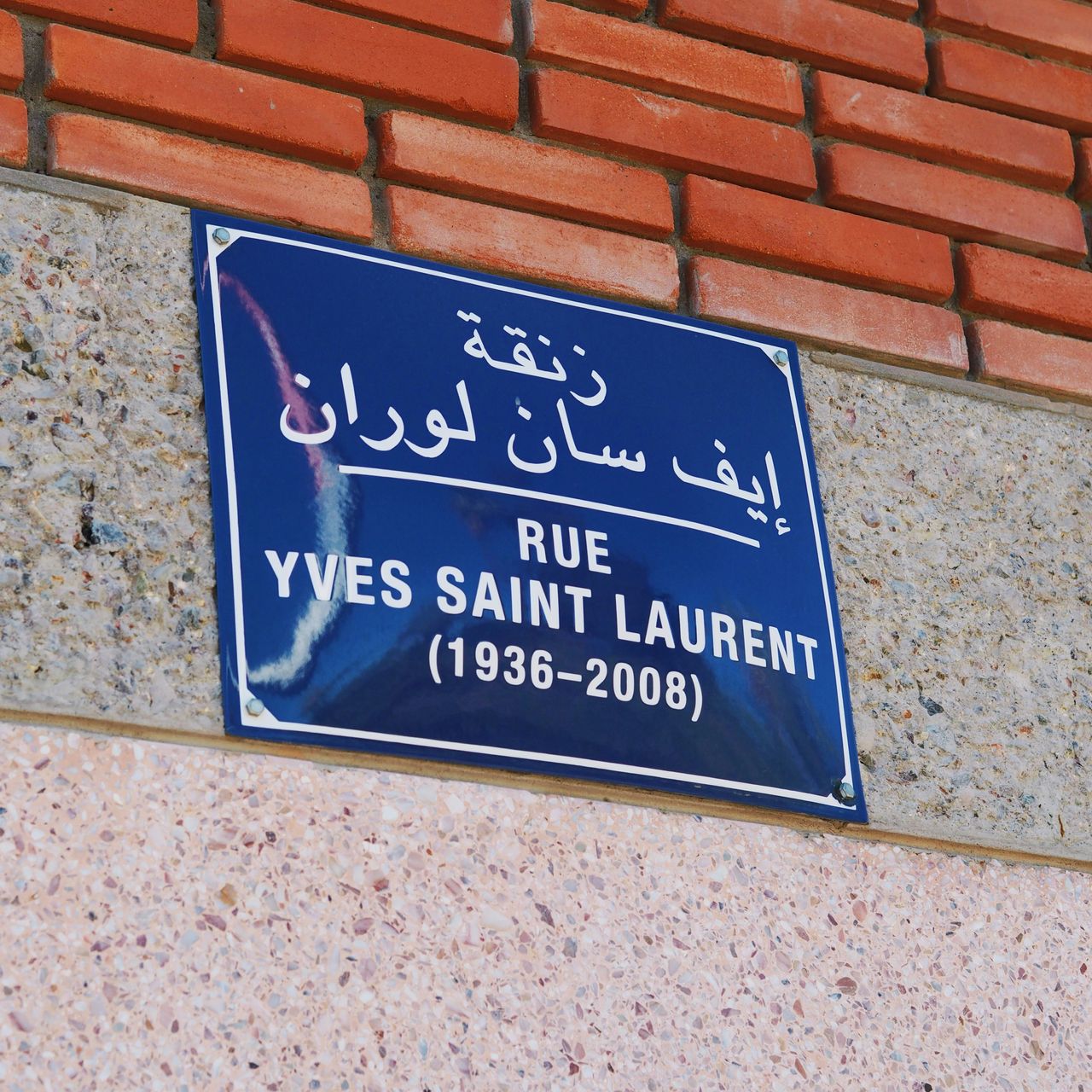Born in Oran, Algeria in 1936, Yves Saint Laurent (YSL) spent much of his youth there before heading to the City of Light. His first experience with Dior and a crucial meeting with Pierre Bergé — an entrepreneur — marked the start of an independent career for the talented designer with the creation of his own fashion house, Yves Saint Laurent. Driven by a revolutionary spirit, Yves Saint Laurent, a nonconformist at heart, reinvented women's fashion by introducing a masculine touch, especially with the famous tuxedo and pantsuit.

The eternal love affair
Known as the Little Prince of haute couture, he also had a great passion for travel, leading him to a decisive visit to Marrakech in 1966. Since then, the designer made it a ritual to visit the red city on the first of June and December each year to sketch his collections. Yves Saint Laurent found an oasis of inspiration and peace in the city he adopted and decided to settle there with Pierre Bergé.

After purchasing a house in the medina, Dar el Hanch, the two partners were charmed by the Jardin Majorelle, which had been neglected after the death of French painter Jacques Majorelle, and decided to buy it in 1980. The Villa Oasis and its surrounding lush garden became an escape for Yves Saint Laurent, and even a source of inspiration.
"When I discovered Morocco, I understood that my own chromaticism was that of zelliges, zouacs, djellabas, and caftans.
The boldness I have since shown, I owe to this country, to the violence of its harmonies, to the audacity of its combinations, to the ardor of its inventions. This culture became my own, but I did not merely import it; I annexed, transformed, and adapted it." Yves Saint Laurent.
In 2002, the man who dressed celebrities around the world decided to retire and focus on the foundation he created with Pierre Bergé, which brought his creations back to life through conservation, exhibitions, and charitable activities.
Yves Saint Laurent set foot in Marrakech for the last time in 2006. After his passing in Paris in June 2008, his ashes were scattered in the rose garden of the Villa Oasis, and a memorial in his name was established in the heart of the Jardin Majorelle. The legacy of the fashion genius remains ever-present in the red city, especially with the inauguration of the Rue Yves Saint Laurent by Princess Lalla Salma in 2010.
The Yves Saint Laurent Museum

The Musée Yves Saint Laurent in Marrakech is a vibrant tribute to the legendary designer and his deep connection with the red city. Opened in October 2017, this 4,000 m² museum, designed by Studio KO, features cubic architecture in bricks with a plush interior, creating a striking contrast that reflects the designer's aesthetic. The permanent exhibition, covering 400 m², showcases around fifty iconic Yves Saint Laurent designs, exploring beloved themes such as masculinity-femininity, black, Africa, and Morocco.
With minimalist scenography by Christophe Martin, the creations are highlighted against a black backdrop, while an audiovisual installation illustrates the designer's creative process. The museum also offers an immersive experience with a temporary exhibition hall, a research library with over 5,000 works, a 140-seat auditorium screening documentaries on YSL, a specialized bookstore, and a café with a terrace.
This museum, unique outside Paris, plays a pivotal role in highlighting the profound bond between Yves Saint Laurent and Marrakech. It presents a unique collection of sketches and original drawings, giving visitors an intimate insight into the designer's creative genius. Located near the Jardin Majorelle, another emblematic site linked to Yves Saint Laurent's story in Marrakech, the museum has become a must-see on the city's artistic scene, attracting fashion enthusiasts, art lovers, and architecture aficionados alike.

